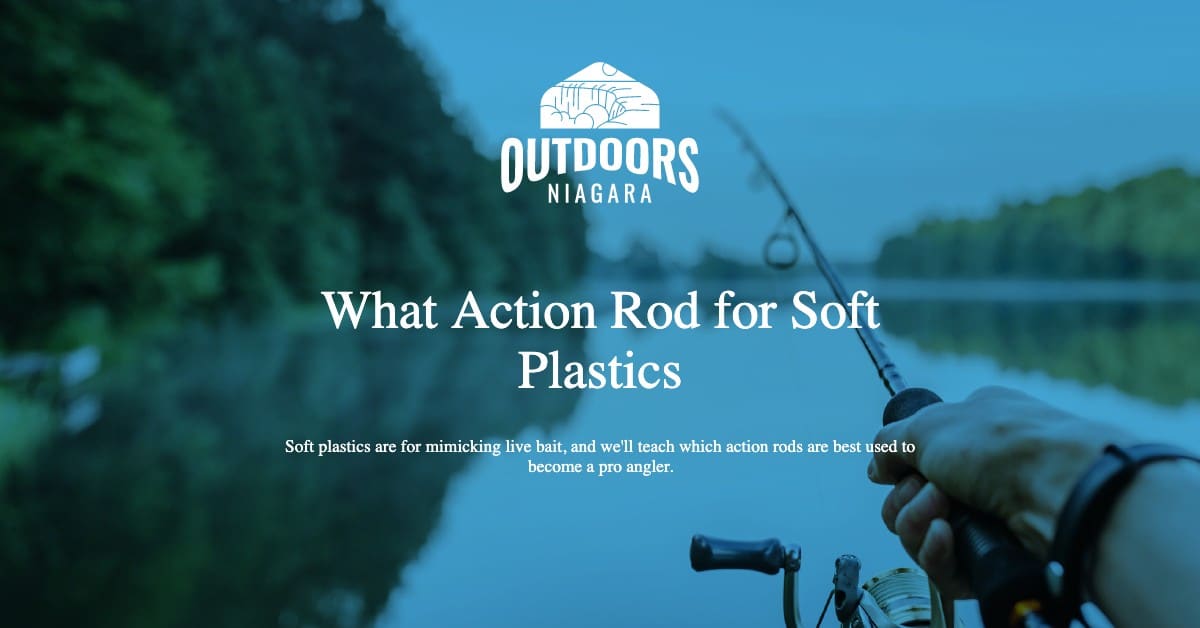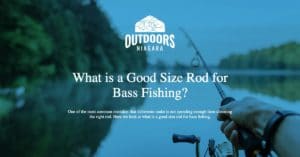“Soft plastics” is a general term we use primarily for bass fishing.
They are a large and odd family of products made of rubbery plastics and formed into abstract representations of foods bass fish love to eat – worms, insects, crustaceans, naiads, small mammals, etc.
These can be effective attractants for bass fishing and other types of fishing too.
As good as soft plastics are for mimicking live bait, people often have a lot of questions about how to use them effectively.
This post goes over pairing the correct type of fishing rod with soft plastic baits.
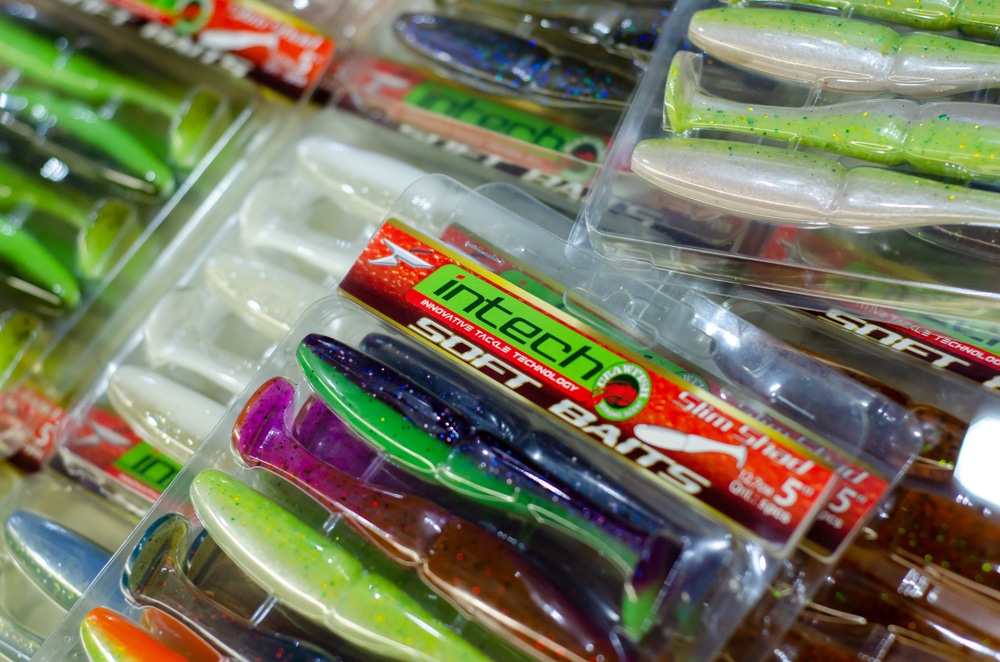
Contents
What action rod for soft plastics?
Soft plastics are light in weight making them ideal for rods that hold lines with thinner diameters and fast rod tips.
The correct action for your rod will vary slightly depending on where you are fishing.
In shallow waters, you want a rod with ultralight or light action.
Both mean that the rod bends only at the tip, which will improve how you present your soft plastics along the bottom of the shallow water or along the top of the water column.
The ultra-light or light action allows you to jig your soft plastic attractant across the bottom in short hops.
That’s a perfect setup for bass to strike, and they do.
You want to keep the fishing rod’s action in deeper waters at ultra-light or light.
As you flick your wrist to move the bait, the rod’s tip is the only part of the rod that moves.
If you are targeting five over ten pounds, you will want to increase the power rating of the pole to medium.
Ultimately it is difficult to beat a light action fishing rod for soft plastic.
If you are targeting bigger fish, such as salmon, you might consider going with a medium-light action so that more of the weight and fight of the fish is more evenly distributed over the entire length of the fishing rod.
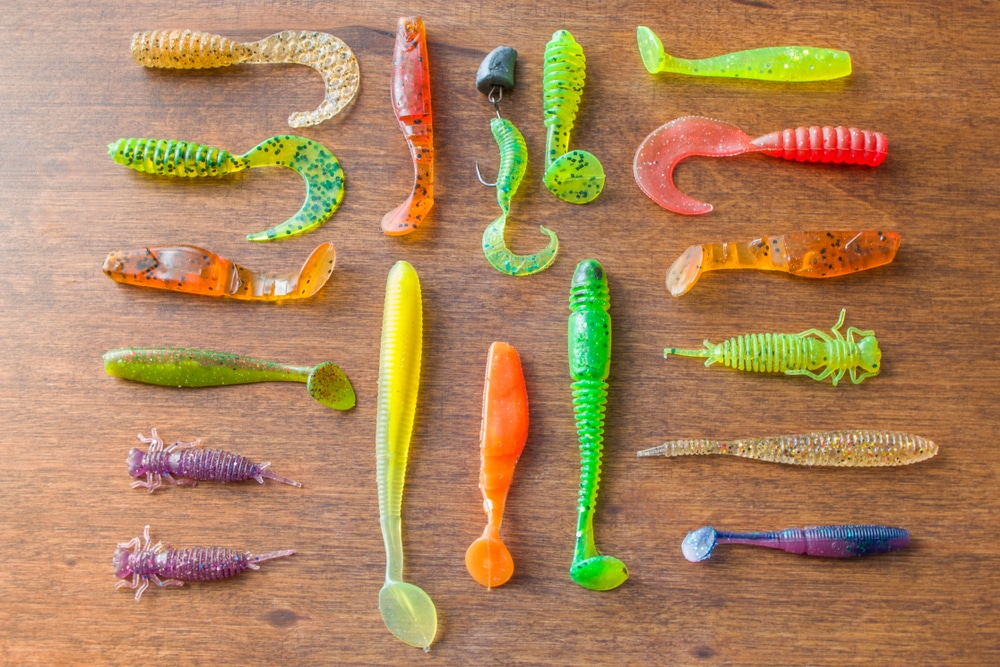
How to choose a fishing rod for soft plastics
A few factors go into choosing a rod for light plastic setups. Those include:
- Fatigue – Soft plastics are almost always used with a flicking or jig motion. Flick – reek -flick – reel – flick – reel – it leads to a lot of casting. So, the rod needs to be lightweight but also heavy enough to handle the type of line you are using, soft plastic or lure weight, and the weight and power of the fish you want to catch.
- Accuracy – We did mention that soft plastic fishing often leads to more casting. That means that a longer fishing rod is essential because longer rods are more accurate when casting. Ideally, we are talking about anything in the 7-10 foot long range.
- Responsiveness – A responsive rod is essential for use with soft plastics. Many soft plastics are an imitation of live bait. Predatory fish will strick at what they think is live bait. You need to feel that strick quickly and then set the hook equally fast when they do. A good rod for soft plastics is very responsive. That means you want to choose a rod that has an ultrafast or fast action rating.
For most bass fishing you want a rod that is 6-8 feet long with light action.
Sometimes the action rating is mentioned in terms of speed – fast or slow.
A light action tip returns to its original straight position fast – it is a fast tip.
A rod with a heavy action tip returns more slowly to its original straight position, so it is a slow action rod.
6-8 foot rod, fast or light action, light to medium power – This rod setup will give you a lightweight rod that you can cast all day long without getting tired.
The length is sufficient to improve casting accuracy, and the tip is FAST, so the rod is responsive.
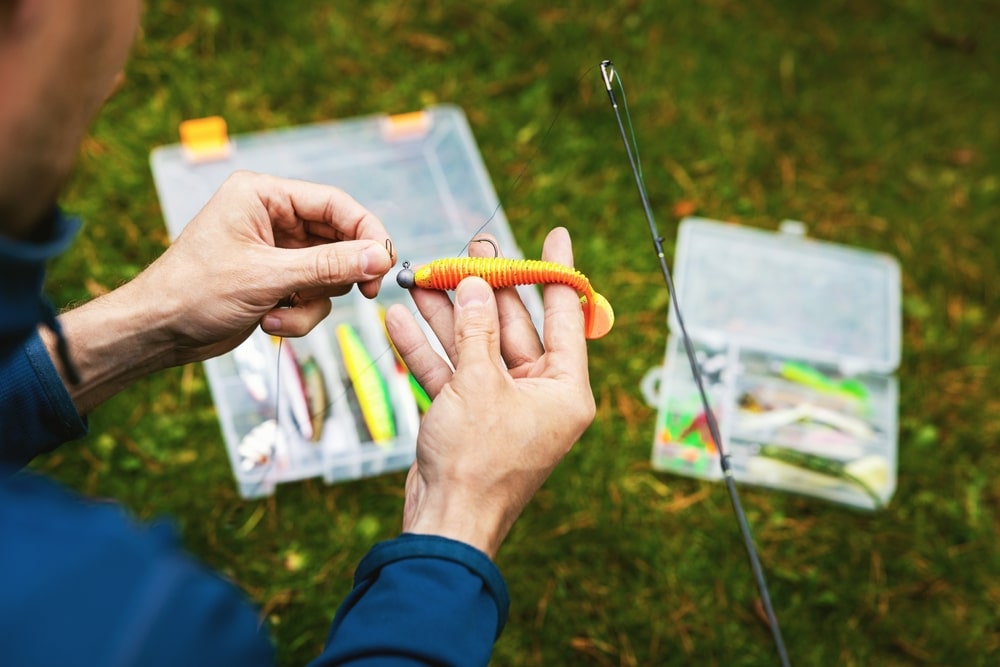
FAQ
What are soft plastics for fishing?
Soft plastics for fishing are a wide range of products that imitate live bait, are soft so that they move in the water, and come in a range of colors.
They are designed to accept a hook and are often associated with bass fishing, though they are also acceptable in saltwater or freshwater fishing.
What kind of line to use when fishing for bass with soft plastics?
Generally, you want to use monofilament or fluorocarbon lines because they are harder to see in the water.
Some anglers will use a thin braided line with a long leader.
Either way, the goal remains that the fish cannot see the line, which makes mono or fluor lines a little better than braided lines.
The deal with braided lines is that they are much stronger and strength is not the first requirement when you fish with soft plastics.
Can bass see at night when fishing with soft plastics?
Yes. Largemouth bass has very good night vision.
A brightly colored soft plastic or live minnow mimic would be good for night fishing largemouth bass.
How to rig soft plastics for ice fishing
There are a few ways you can rig your soft plastics for ice fishing.
The first method is simply to set up the line with a hook and sinker and then slide the hook through the head of the soft plastic.
The second option is to thread the soft plastic piece over the hook.
You want to thread the piece until the eye of the hook is all that you see.
The hook portion will emerge from the plastic bit near the middle and leave a longer piece that can move in the water.
A third option is to place the soft plastic piece horizontally and place the hook through the middle, so the soft plastic piece drags through the water.

